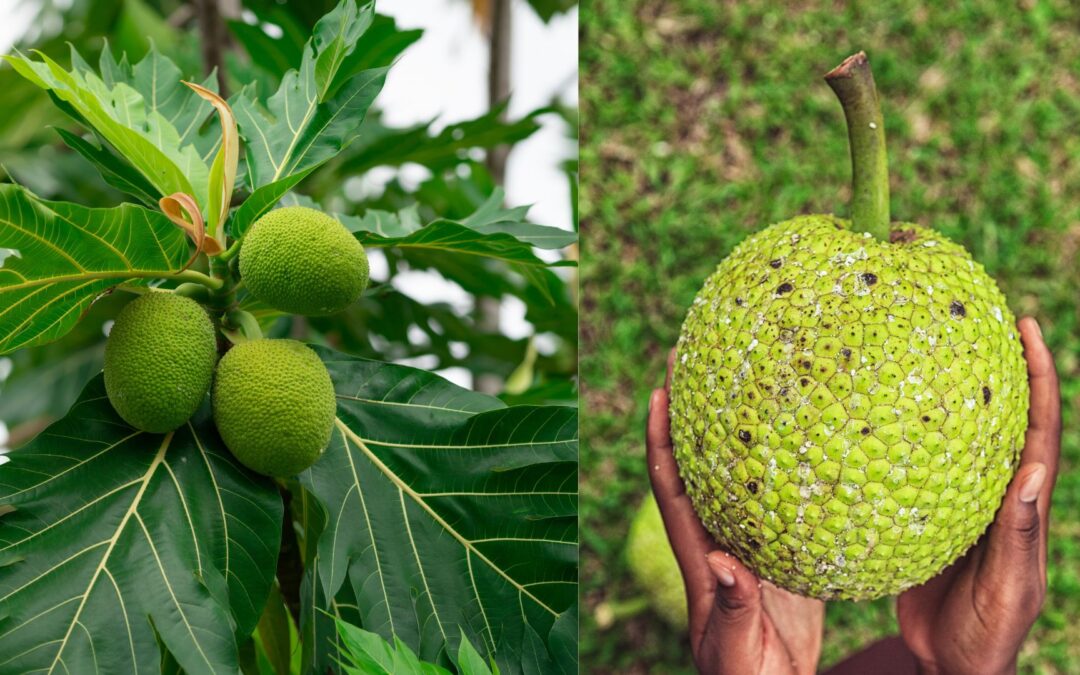On St. Croix, breadfruit is something very familiar to us. We see beautiful breadfruit trees on island, and breadfruit used in restaurant menus, snacks, and cocktails. We love breadfruit and all of its uses. According to a recent Forbes article, “With its immense potential for food resilience and security, breadfruit or Artocarpus altilis is being celebrated as a staple crop with the opportunity to boost global climate smart sustainable development.” This article highlights examples of how breadfruit is being used in products and menus (such as in an episode of the National Geographic series, Gordon Ramsay: Uncharted). St. Croix’s Mutiny Island Vodka which is made of a combination of breadfruit and Caribbean rainwater is also featured. Read the full article here.
Nutritionally, breadfruit is an energy-rich food and a good source of complex carbohydrates, fiber, vitamins, and minerals. Here on St. Croix, USVI, it is an ingredient common in West Indian and Latin cuisine. It has potato-like consistency when cooked, and a good source for gluten-free and vegetarian recipes.
According to The National Tropical Botanical Garden, breadfruit is an important component in traditional agroforestry systems and can be grown with a wide range of plants. Trees begin to bear fruit in three to five years, producing for many decades. The trees require little attention or care, producing an abundance of food with minimal input of labor or materials, and thrive under a wide range of ecological conditions. The ethnobotanist Diane Ragone from the NTBG said in a NPR interview, “compared to other food staples, these fast-growing perennial trees require far less labor, fertilizer and pesticides than crops like rice and wheat. They’re also more productive. A single tree yields an average of 250 fruits a year and can feed a family for generations.
For some ways to use breadfruit in your meals, take a look at the Cruzan Foodie’s blog article about how she uses breadfruit!

